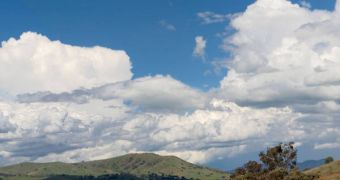An international cooperation between researchers from the United States, Switzerland and Germany has recently proven that lead coming from human activities is able to drastically influence the formation of clouds. The way it does that is by altering the manner in which ice crystals – the main trigger of clouds – form, which means that, in more polluted areas, the clouds take shape at warmer temperatures and with less water than they would usually need. These phenomena have the potential to influence the way in which atmospheric fronts circulate in the atmosphere.
On a brighter side, under some very specific circumstances, lead-laden clouds have the ability to dissipate some of the Earth's heat back into space, causing a localized cooling effect and relieving some of it from the atmosphere. The results of the international effort are published in the May issue of the journal Nature Geoscience. The experts say that “lead clouds” can be distinguished from the regular type through their silver linings, which give them away. They can be found very often over areas that deal with coal, as this is the main source of the chemical.
“We know that the vast majority of lead in the atmosphere comes from man-made sources. And now we show that the lead is changing the properties of clouds and therefore the balance of the sun's energy that affects our atmosphere. This work highlights how complex these interactions between lead and water vapor and temperature are. They're not as simple as greenhouse gases,” US Department of Energy (DOE) Pacific Northwest National Laboratory Atmospheric Chemist Dan Cziczo, who has also been the author of the new scientific study, shares.
For the experiments, the researchers turned to a number of facilities in Europe, which specifically dealt with studying clouds and other atmospheric phenomena. The team then created two small amounts of dust, of which one was lead-free, while the other contained a one-percent lead concentration, which is about as much as can be found in the atmosphere at this point. The team subsequently analyzed how clouds formed in special chambers, and concluded that lead drastically influenced the temperature and humidity regular clouds needed in order to form.
“Most of what nucleates clouds are dust particles. Half of the ones we looked at had lead supercharging them,” Cziczo adds. “In our atmosphere, lead affects the distribution and density of the kinds of clouds we looked at, which might then affect where and when rain and snow fall,” he concludes.

 14 DAY TRIAL //
14 DAY TRIAL //